2011 Honda CR-Z Review [video]

It’s not an econo hatchback for all, but a niche market hybrid perfectly targeted to appeal to a certain group of consumers. No, it doesn’t attract the ultra granolas, nor is it a hit with the sort of enthusiasts who know their Hondas not by name, but by chassis code. Instead, the CR-Z is built to appeal to young, urban individuals who value style, fuel economy and a fun-to-drive spirit.
FAST FACTS
| 1. A 1.5L i-VTEC 4-cylinder and 10-Kw electric motor combine to produce 122-hp and 128 ft-lbs of torque (123 ft-lbs with the CVT). |
| 2. Honda’s IMA Hybrid system is a less advanced system than the one in the Prius. The car can’t operate on pure electric power, but does get electric assist, as well as a start-stop system and regenerative braking. |
| 3. Fuel economy ranges from 35/39-mpg (city/highway) for the CVT and 31/37-mpg for the 6-speed manual. |
| 4. Base models start at $19,200 while a nicely equipped EX with the CVT goes for $21,410. |
| 5. The CR-Z is the only hybrid available with a manual transmission. |
There are a lot of misconceptions about this new Honda product, and it’s easy to dump on a car that isn’t extraordinary in any one obvious way. With 122-hp it won’t deliver the thrills of a K24 in an EK (yea, we know Honda codes too), nor does it get the fuel economy of a Fiesta or a Prius, with a 35/39-mpg fuel economy rating. And it’s not a sports car – although it certainly handles like one. Nor is it a hybrid in the way people expect, meaning that it doesn’t and isn’t intended to deliver a revolutionary change to the way we drive.
Forget all that; the CR-Z isn’t competing with the Fiesta, nor is it up against the Prius, or any other hybrids on the market for that matter. Pigeonholed into a single segment, the CR-Z is the catastrophic failure any Honda fanboy with a modified CRX will tell you it is. But when looked at as a whole it represents a vehicle that’s more than the sum of its parts and so much more than these other cars, delivering a package that’s good on fuel, great on the eyes, a blast to drive and an urban status symbol.
Not convinced? Just forget it’s a hybrid for a second and imagine a MINI Cooper that gets better fuel economy, is just as fun to drive, looks 1,000 times better (inside and out) and is virtually guaranteed to have absolutely stellar reliability. That’s right, the CR-Z is a better Cooper and, coincidentally, is priced almost identically.
If we sound a bit too enthusiastic, please bear in mind we didn’t come to this conclusion lightly, with Honda giving us endless reasons to be critical of its decisions as of late.
HONDA’S IMA HYBRID SYSTEM DELIVERS MINIMAL FUEL ECONOMY GAIN
We do, however, have one big complaint about the CR-Z and that’s the Integrated Motor Assist (IMA) hybrid system it uses, which is, to put it mildly, obsolete. The issue with the IMA system is that it’s not just delivering the fuel efficiency gain you’d expect. And while it is inexpensive, the CR-Z would be a far more impressive vehicle if Honda could muster its engineering talent to deliver essentially the same vehicle with an added 15 percent fuel economy rating and an average of 40-mpg. As it stands, the IMA setup is no better than direct injection.
On our manual transmission test car, other flaws became evident with the IMA as well. While we give huge credit for being the first automaker to deliver a hybrid with a manual transmission, there are still a few bugs left to be worked out. For starters, the start-stop feature only works when the car is taken out of gear, meaning that you’ll actually get the best fuel economy if you pull the shifter out of gear a few seconds before you stop. This could take some getting used to for anyone who regularly keeps their car in gear so they’re always prepared.
What’s likely to bug more drivers is the practice it requires to get the car going smoothly. The reason for this is that once it’s put back in 1st gear to leave a light, the engine revs up and then begins to drop just as you let off the clutch, often making the engine bog down for a split second. It can take some time to adjust your timing as you feel like you’re learning to drive stick all over again.
The big up-side of the 6-speed stick shift is that it adds plenty of fun to the package. Another down-side is that you don’t get optimum fuel economy. While Honda likes to boast the car’s 35-mpg city and 39-mpg highway rating (37-mpg average), that’s only with the CVT, which we didn’t have a chance to drive, but can practically guarantee will suck nearly all the fun right out of this package. That’s to be expected, as even the Honda faithful will admit the original CRX with a slushbox was a dud.
The 6-speed model gets a less-impressive 31/37-mpg rating (or 34-mpg average). Even then, the CR-Z is a few ticks more efficient than the MINI Cooper at 29/37-mpg (32-mpg average).
THREE SELECTABLE DRIVE MODES
Helping make the most of the hybrid setup, Honda has included a three-stage drive system with buttons for Normal, Sport and Economy with dash lights that change from blue, to red to green to indicate the drive mode. The Economy or “ECON” setting dulls the throttle sensitivity to ensure you’re light on the gas and even limits full engine power (although full power is still available at wide open throttle), while the Sport mode makes for a sensitive throttle with maximum electric thrust, as well as a more direct steering program. Like the Lexus CT200h we tested a few weeks back, this helps make the car feel faster with an immediate sensation of torque. Then, like any Honda, the CR-Z does reach it’s fun point high up in the rev range.
Perhaps these systems ask too much of drivers, but we easily got used to switching between drive modes numerous times during a commute, improving the fuel economy when stuck in traffic and dialing up the fun when the road cleared.
A FUN TO DRIVE HYBRID
The Sport mode on this hybrid is more truthful than on any other due to the exceptional handling capabilities of the CR-Z. Again, it’s no straight-line performer, but the CR-Z is an absolute hoot to drive. Its well-balanced chassis and light 2,600 lb curb weight make it agile and it absolutely sticks to the ground in the corners. We don’t need to remind you that Honda is fully capable of building a front-driver than can put a lot or rear drive performance machines to shame – and they’ve done so again with the CR-Z.
It’s neutral in the corners and there’s plenty of grip from the tires, even without the upgraded 17-inch wheels, wider and lower-profile tires. Even at high speeds the CR-Z doesn’t give up anything. In fact, it’s hard to believe there’s a torsion beam out back, as the CR-Z behaves more like it’s got a fully independent suspension, without getting unsettled when the road bumps and curves at the same time.
Steering is precise and is undeniably some of the most heavily weighted this side of a Lamborghini Murcielago.
Perhaps even more surprising than the handling is how comfortable the ride is. Making a nimble lightweight package is one thing, but ensuring it doesn’t feel like your riding in a tin can is something else.
As for details like shifter feel; it’s superbly Honda-rific. Plus, the CR-Z comes with a nice set of sporty aluminum pedals.
FUTURISTIC DESIGN TO MATCH HYBIRD DRIVETRAIN
Design wise we love the style of the car, both inside and out. The cabin is filled with plastic, but Honda has done it in such a way that you don’t notice, even using things like clear plastic for the door handles to give a high-tech Tron-like feel. There’s also a lot of high-gloss black plastic, including for the three drive mode buttons
That’s nothing compared to the dash, however, with a 3D look for the speedometer and tachometer that’s visually stunning. To the left is the Eco Guide display to measure the battery charge and a real-time readout of when the battery is being charged or depleted to help power the car. To the right side of the speedometer and tachometer is the Eco Scoring display that keeps track of fuel efficient driving over time and trips.
The seats are another work of art, with a unique mesh fabric that looks more like it belongs in a concept car – one designed by Steve Jobs no less. They’re also incredibly supportive.
In so many ways Honda has designed a cockpit that verges on being premium, without using any luxury materials at all.
Starting at $19,200 the CR-Z is also available with a CVT automatic for just under the $20,000 mark. The base model comes with plenty of standard items like power windows, locks, a tilt and telescopic steering wheel with cruise control and audio buttons, as well as remote keyless entry, a six-speaker AM/FM/CD/USB audio system and hill-start assist. Upgrading to the EX level adds a 360-watt 7-speaker audio system (including a subwoofer), a leather wrapped steering wheel and Bluetooth – something which really out to be standard. The EX models is only a small step up in price, with the manual costing $20,760 and the CVT set at $21,410.
THE VERDICT
Considered another of Honda’s recent failures by many, the CR-Z is severely misunderstood – tragically perhaps. Purists will complain that the hybrid setup adds weight and cost to the product, but in both cases the additions are quite minor. But forget it’s a hybrid and it’s easy to love this clever package.
The CR-Z is not a sports car and it’s not a 50-mpg Prius. And it’s not a revolutionary bringing together of both – something that would no doubt be awesome, but cost twice as much. Instead the CR-Z is half way between, delivering a very cool and extremely fun to drive car that’s incredibly unique and easy on the environment. It’s perfectly targeted at younger urban buyers and its priced right too.
RELATED READING
2010 Audi A3 TDI Review
2010 Volkswagen Golf TDI: First Drive
2010 Honda Insight
2009 Honda Civic Hybrid
2010 Toyota Prius III Review
LOVE IT
- Futuristic design inside and out
- Incredibly agile, but also quite refined
- Three drive modes deliver fun or efficiency
LEAVE IT
- More advanced hybrid system would help improve fuel economy and even performance
- Stick shift with start-stop takes some getting used to
- Bluetooth isn’t standard

With AutoGuide from its launch, Colum previously acted as Editor-in-Chief of Modified Luxury & Exotics magazine where he became a certifiable car snob driving supercars like the Koenigsegg CCX and racing down the autobahn in anything over 500 hp. He has won numerous automotive journalism awards including the Best Video Journalism Award in 2014 and 2015 from the Automotive Journalists Association of Canada (AJAC). Colum founded Geared Content Studios, VerticalScope's in-house branded content division and works to find ways to integrate brands organically into content.
More by Colum Wood























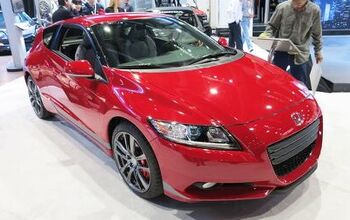
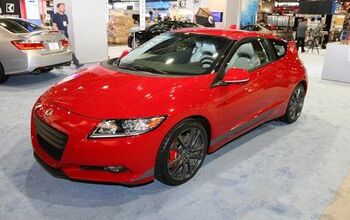
![2011 Honda Odyssey Touring Elite Review [Video]](https://cdn-fastly.autoguide.com/media/2023/06/26/06081/2011-honda-odyssey-touring-elite-review-video.jpg?size=350x220)
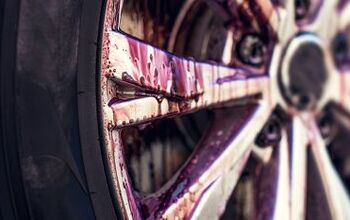



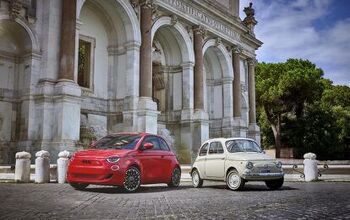


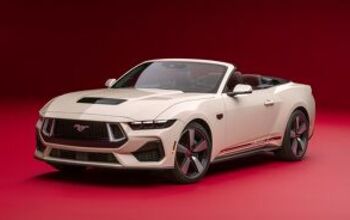

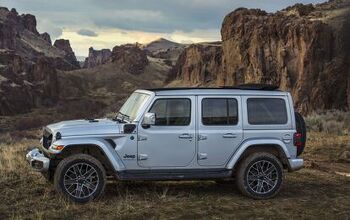
Comments
Join the conversation